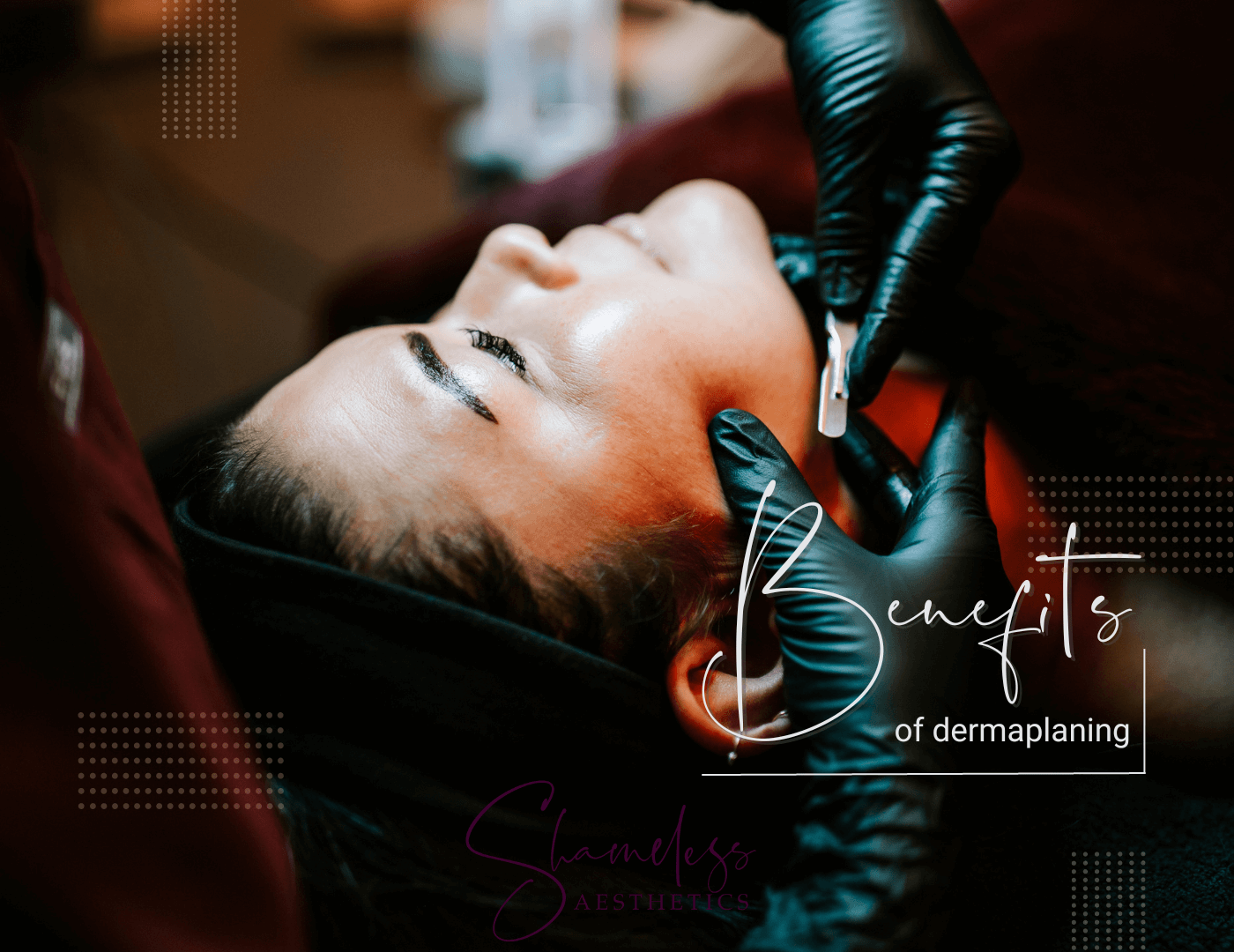Key Takeaways
- Dermaplaning removes dead skin and peach fuzz, leaving skin smoother, brighter, and better able to absorb skincare products.
- It pairs well with treatments like facials, LED therapy, and hydrating masks, but stronger treatments like chemical peels should be spaced at least a week apart.
- With zero downtime, dermaplaning is safe for most skin types and provides an instant glow, making it a great option for regular skincare maintenance.
When it comes to achieving smooth, radiant skin, few treatments compare to dermaplaning. This professional exfoliation method is beloved for its ability to remove dead skin cells, eliminate peach fuzz, and enhance skincare absorption—all with zero downtime. Whether you’re looking for a quick glow-up before a big event or want to maintain a fresh, youthful complexion, dermaplaning is an excellent choice. Plus, when paired with other treatments like custom clinical facials, it takes your results to the next level.
What Is Dermaplaning?
Dermaplaning is a non-invasive skincare treatment that involves gently gliding a sterile surgical scalpel over the skin to remove dead skin cells, debris, and fine vellus hair (peach fuzz). Unlike other exfoliation methods, dermaplaning doesn’t involve chemicals, making it a fantastic option for all skin types, including sensitive skin.
This treatment works by sloughing away the outermost layer of dead skin, revealing a fresher, smoother complexion underneath. It also allows for better penetration of serums, moisturizers, and treatments, maximizing their effectiveness.
Who Can Benefit from Dermaplaning?
Dermaplaning is ideal for:
- Individuals with dull, rough, or uneven skin texture
- Those looking to improve makeup application and create a smooth base
- Anyone wanting better product absorption for skincare benefits
- People with fine lines, dry patches, or minor hyperpigmentation
- Those who can’t tolerate harsher exfoliation methods like chemical peels or microdermabrasion
However, individuals with active acne, rosacea, or extremely sensitive skin should consult a professional before booking a dermaplaning session.
The Benefits of Dermaplaning
- Instantly Smooth, Brighter Skin: One of the biggest draws of dermaplaning is its instant results. After just one session, skin appears brighter, softer, and more radiant, giving you that sought-after glow.
- Enhances Product Absorption: By removing the barrier of dead skin cells, dermaplaning allows your serums, moisturizers, and treatments to penetrate deeper, making them more effective.
- Creates a Flawless Base for Makeup: Ever notice how foundation and concealer settle into fine hairs and texture? Dermaplaning eliminates this problem by creating an ultra-smooth surface, helping makeup apply seamlessly and last longer.
- Non-Irritating & Zero Downtime: Unlike chemical exfoliants or harsher treatments, dermaplaning is gentle and has no recovery period. You can leave your appointment with immediate results and minimal redness.
- Safe & Effective for Most Skin Types: Dermaplaning is suitable for most skin types, including dry, normal, and combination skin. However, those with active breakouts or highly reactive skin should consult with a skincare professional first.
Dermaplaning + Other Treatments
While dermaplaning is powerful on its own, combining it with other professional treatments can further amplify your skincare results.
Dermaplaning & Custom Clinical Facials
A custom facial immediately after dermaplaning allows for deep hydration and nourishment, leaving your skin feeling plump and refreshed. The exfoliation from dermaplaning allows facial masks, serums, and treatments to penetrate deeper and work more effectively.
Dermaplaning & Chemical Peels
For those seeking deeper exfoliation, dermaplaning can be done before a gentle chemical peel to enhance its effectiveness. However, these treatments should typically be spaced at least a week apart to prevent irritation. Some professionals may perform both in the same session using a mild peel, but stronger peels require more recovery time between treatments. Always consult your provider to determine the safest approach for your skin.
Dermaplaning & LED Light Therapy
LED light therapy is a great addition to dermaplaning, as it helps calm any post-treatment redness, boosts collagen production, and promotes healing.
Dermaplaning & Hydrating Masks
Post-dermaplaning, a hydrating or soothing mask can lock in moisture and deliver essential nutrients, ensuring your skin stays plump and radiant.
What to Expect During & After a Dermaplaning Treatment
The Treatment Process
A typical dermaplaning session lasts 30-45 minutes and includes:
- Cleansing the skin to remove any dirt, oil, or makeup
- Gentle dermaplaning using a sterile blade to exfoliate the surface
- Hydrating serums and skincare to replenish moisture
- SPF application to protect freshly exfoliated skin
Post-Treatment Care
Since dermaplaning removes the top layer of dead skin, your skin will be more susceptible to sun exposure and environmental factors. Follow these post-care tips:
- Wear SPF daily to prevent sun damage.
- Use gentle, hydrating products to maintain your results.
- Avoid harsh exfoliants like retinoids and scrubs for a few days.
Is Dermaplaning Right for You?
If you’re looking for an instant glow, better product absorption, and silky-smooth skin, dermaplaning is a great choice. Whether you have an upcoming event or want to maintain a healthy complexion year-round, this treatment delivers immediate and long-term benefits.
For those with specific skin concerns, it’s always best to consult with a skincare professional to determine the best treatment plan for your unique needs.
FAQs
1. Does dermaplaning make hair grow back thicker or darker?
No, dermaplaning does not change the thickness, color, or growth pattern of hair. The fine vellus hair (peach fuzz) removed during treatment will grow back at the same rate and texture as before.
2. Is dermaplaning safe for all skin types?
Dermaplaning is safe for most skin types, including dry, normal, and combination skin. However, those with active acne, rosacea, or extremely sensitive skin should consult with a skincare professional before treatment to avoid irritation.
3. How often should I get dermaplaning?
For best results, dermaplaning is recommended every 4 to 6 weeks. This allows enough time for skin to regenerate while maintaining a consistently smooth and radiant complexion.
